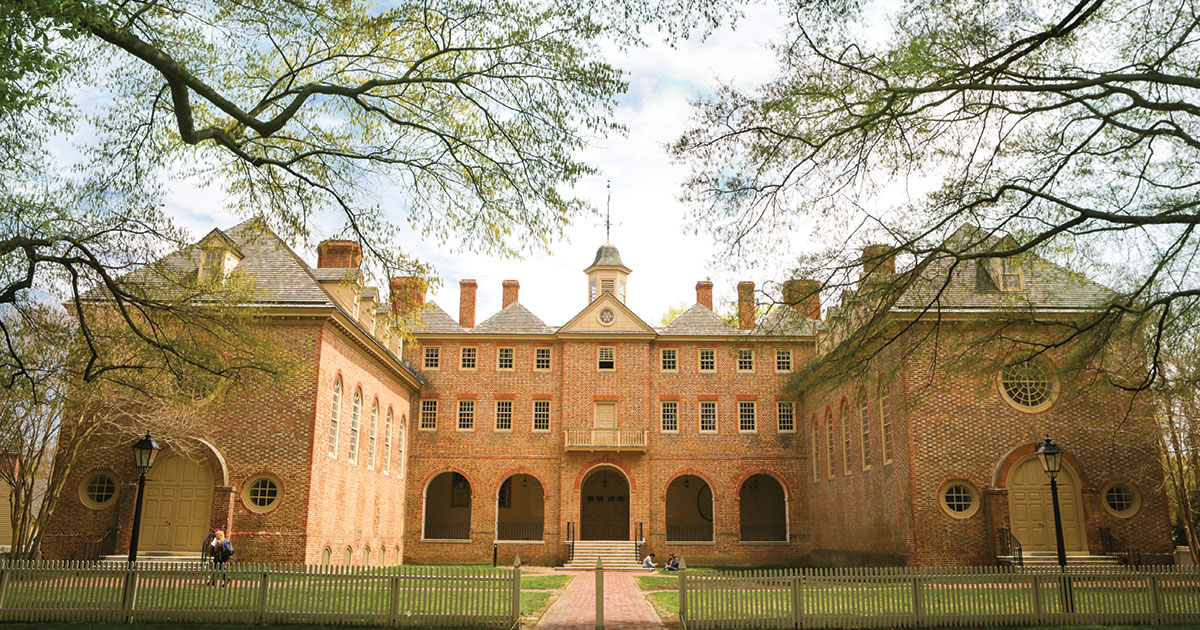Private-public synergy supports web portal for coastal resiliency
William & Mary Law School and William & Mary’s Virginia Institute of Marine Science (VIMS) are collaborating on a new website that will provide key information to support local, regional, and state efforts to adapt to sea-level rise, thanks to a $1.2 million grant from blue moon fund.
The grant will provide funding for the Virginia Coastal Adaptation Data Portal, a website that will give a wide variety of information, data, analyses, and tools useful for risk assessment and adaptation planning. Hampton Roads has the highest rate of sea-level rise on the East Coast, putting the region at a heightened risk of recurrent flooding and stormwater damage.
“VIMS is gratified to be a lead in this type of collaboration,” said John T. Wells, dean and director of VIMS, which is home to W&M’s School of Marine Science. “Virginia is on the front lines of sea-level rise and recurrent flooding, and these types of collaborations are critical to the future of coastal communities as we come together to innovate and find new ways to adapt to our changing environment.”
Development of the data portal will be a collective effort among VIMS, William & Mary Law School’s Virginia Coastal Policy Center (VCPC) and Wetlands Watch, a non-profit in Norfolk, Va. focused on the conservation and protection of wetlands.
Portal development and operation will also be closely tied to the research, training, data integration, and outreach activities of the new state-funded Commonwealth Center for Recurrent Flooding Resiliency. The Center, funded through legislation enacted during the 2016 session by the General Assembly and announced today in an Earth Day event by Governor Terry McAuliffe, is a collaborative partnership among VIMS, VCPC, and Old Dominion University.
Wells says the center “is a perfect example of VIMS’ ability to leverage academic partnerships and private grant funding for the public good.”
When completed, the web portal will provide officials at all levels of the government, as well as the public, with vital information with the click of a button. “For many policy makers and private citizens, sea-level rise is overwhelming because it’s rapidly evolving,” said Carl Hershner, director of VIMS’ Center for Coastal Resources Management. “This will be a trusted source of information where people can go to try to make sense of all this, and get information they can act on. VIMS was created to provide this kind of service for the commonwealth.”
“The data portal will be the go-to website for the latest legal and technical analyses,” said Davison M. Douglas, dean of William & Mary Law School. “The collaboration between VIMS and the Virginia Coastal Policy Center will provide a better understanding of sea-level rise impacts for government officials and the public. Legal expertise coupled with scientific research is a great match to build this website.”
The website will include research about the harmful effects of sea-level rise and potential solutions to address those challenges. Sea-level rise causes flood damage, erosion and loss of habitat for wildlife. There will also be tools that assist local and state leaders in planning and implementing the featured strategies.
Tidal and storm surge flooding risks, FEMA flood zone maps, storm history and critical infrastructure risk assessments are all topics that are likely to be included on the website. Information about conditions of shorelines, wetlands, beaches and coastal forests will also be in the portal.
“The portal will be a very useful tool for local governments and citizens, providing one easily-accessed source of information on adaptation measures to address sea-level rise,” said Elizabeth A. Andrews, director of the Virginia Coastal Policy Center. “The Virginia Coastal Policy Center’s role will be to provide legal analysis regarding Virginia localities’ authority and responsibilities for adaptation, as well as information on Virginia statutes, regulations and guidance available on the topic. We are pleased to be able to work with our partner VIMS on this important and timely project.”
Research will be accessible to the public through the portal beginning this fall, though the portal will continue to be developed over the next two years.
This is the third grant blue moon fund has awarded the university. The Virginia Coastal Policy Center received $178,500 from blue moon fund last year. In 2014, VIMS received a $150,000 grant from blue moon fund for related work.
“For 75 years, VIMS has been collecting, analyzing, synthesizing and sharing millions of pieces of data on everything from water quality to fish populations, creating a one-of-a-kind, comprehensive picture of the Bay’s complex ecosystem — with real-life impact far beyond Virginia,” blue moon fund said in a statement. “This data will be critical in predicting future conditions in the face of accelerating global environmental change.”
Located in Charlottesville, Va., blue moon fund is a foundation aimed at mitigating climate change through strategic philanthropy, investments and community partnerships.
“We would like to thank blue moon fund for their generous support in ensuring William & Mary is a leader in sea-level rise research by providing an invaluable tool to government leaders on all levels,” said Matthew T. Lambert ’99, vice president for university advancement. “This data portal will provide critical information that will allow political officials to make informed decisions regarding this issue.”

